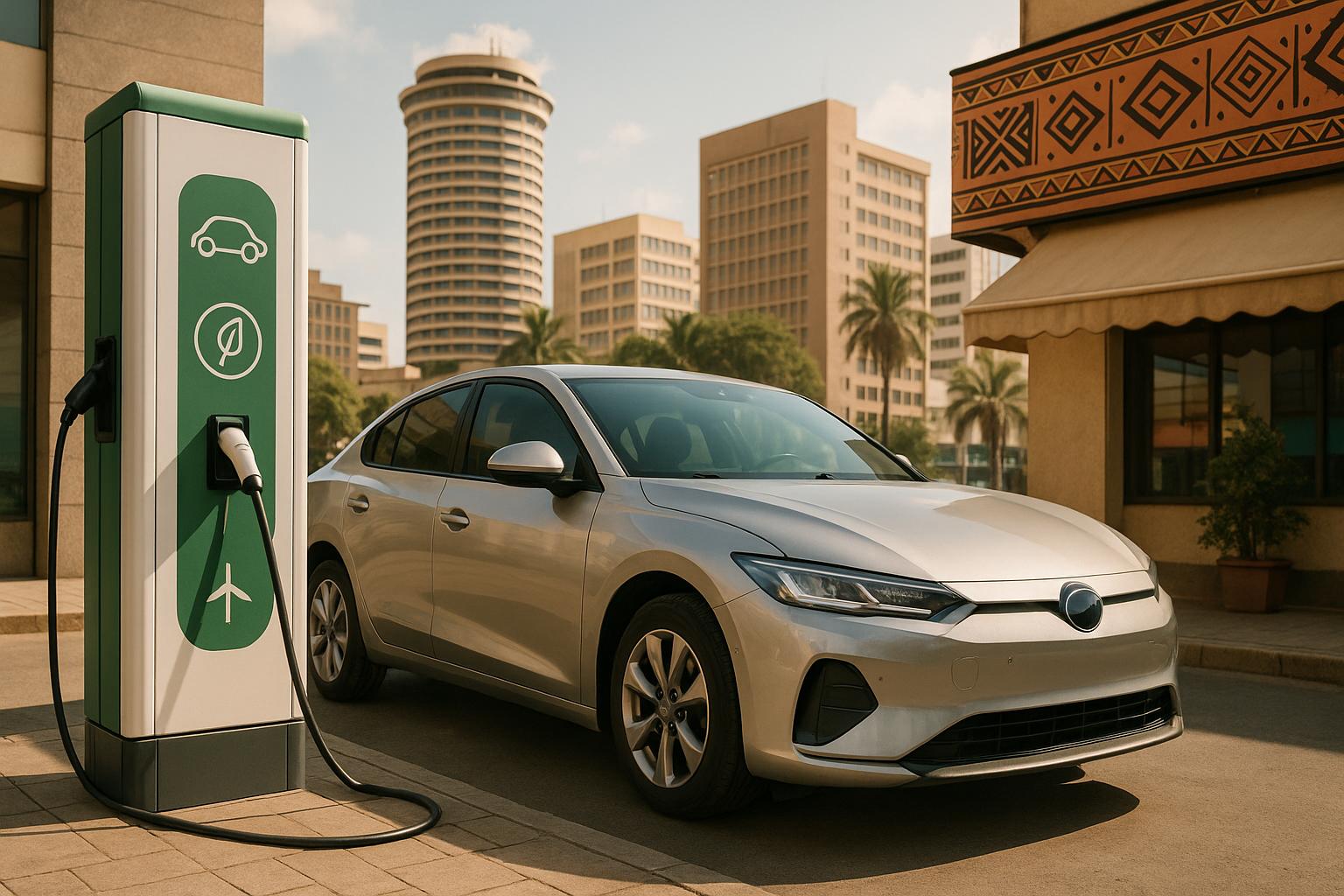Written By: Faith Jemosop
Kenya Accelerates EV Transition Through Strategic Collaborations
Kenya’s journey toward sustainable mobility is gaining momentum through a strategic network of collaborations between the government, private companies, international development agencies, and start-ups. These partnerships are driving electric vehicle (EV) adoption by strengthening policy support, improving charging infrastructure, and lowering ownership costs, positioning Kenya as a rising EV hub in Africa.
The collaborative push has already led to significant gains in urban transportation electrification, with thousands of electric motorcycles and buses entering Kenyan roads, notably in Nairobi and Kisumu. As these efforts intensify, Kenya is emerging as a key player in Africa’s transition to clean mobility, supporting the country’s broader climate goals and its ambition to reduce dependence on imported fossil fuels.
Kenya’s EV progress is not the result of a single actor. Instead, it is the product of coordinated action by stakeholders across the mobility ecosystem:
- Government Support: The Ministry of Energy and Petroleum and the Ministry of Transport have launched policy frameworks that incentivize EVs through tax exemptions, import duty waivers, and plans for nationwide charging infrastructure. The Draft E-Mobility Policy 2023 and the Integrated National Transport Policy have become central pillars for guiding stakeholders toward mass EV deployment.
- Private Investment: Local companies like BasiGo, Roam, and Ampersand are pioneering electric public transport solutions. BasiGo, for instance, introduced Kenya’s first fleet of electric buses with financing options for matatu operators, while Roam unveiled East Africa’s first locally designed electric motorcycle, Roam Air.
- Development Partnerships: International organizations such as the United Nations Environment Programme (UNEP), the World Bank, USAID, and the African Development Bank (AfDB) are actively funding research, pilot programs, and infrastructure deployment. UNEP’s Electric Mobility Programme has helped test electric two- and three-wheelers in Kenya under real-world conditions.
- Academia and NGOs: Institutions like the University of Nairobi and think tanks such as Powershift Africa are supporting technical research, feasibility studies, and policy analysis to guide Kenya’s e-mobility shift.
Charging Ahead: Infrastructure Gains Across Urban Centres
While cost has been a major challenge to EV adoption in Africa, Kenya is addressing another key barrier, charging infrastructure. Several private companies and development programs are building charging stations across Nairobi, Kisumu, and Mombasa.
- Kenya Power, the national electricity distributor, has committed to setting up over 100 public EV charging stations across major highways and cities. It is also exploring time-of-use tariffs to encourage off-peak EV charging.
- EvChaja, a local start-up, has already rolled out more than 30 charging points across key routes and partnered with ride-hailing platforms like Uber and Bolt to encourage EV uptake among drivers.
- BasiGo’s e-buses are being charged at solar-powered stations built in collaboration with Kenya Power and private developers, reducing grid strain and maximizing clean energy use.
The growing charging network is reducing range anxiety, one of the key psychological barriers to EV adoption, especially among commercial and public transport users.
Also read: Captain Traoré’s $800 Billion Plan to Electrify West Africa
Kenya’s urban mobility landscape is dominated by motorcycles (commonly known as boda bodas) and tuk-tuks. Recognizing this, collaboration efforts have placed special emphasis on electrifying these sectors.
- Ampersand, operating in Kenya and Rwanda, offers battery-swapping electric motorcycles that significantly reduce operational costs for riders. Their model allows boda boda riders to swap depleted batteries at designated stations within minutes, removing the need for long charging times.
- Roam is scaling production of its electric motorcycles, targeting thousands of riders in urban centres by offering lease-to-own models and training programs.
- Local governments in cities like Kisumu and Nakuru are partnering with NGOs and donor organizations to convert municipal fleets and integrate electric tuk-tuks in public transport.
These efforts are supported by the Energy and Petroleum Regulatory Authority (EPRA), which now includes e-mobility within its regulatory framework, ensuring that tariffs and licensing are standardized across the growing EV landscape.
Also read: KETRACO Begins Power Transmission from Ethiopia to Tanzania via Kenya
Affordability remains a key concern for many Kenyans, especially when EVs are compared to conventional internal combustion vehicles. To address this, multiple partnerships have emerged to reduce the upfront cost of EVs and make them more accessible:
- BasiGo introduced a pay-as-you-drive financing model that allows matatu operators to pay for electric buses in instalments based on kilometres driven, significantly reducing entry costs.
- Roam and Ampersand offer battery leasing and swap stations, ensuring riders don’t bear the full burden of purchasing expensive lithium-ion batteries.
- Financial institutions such as NCBA Bank and Co-operative Bank of Kenya are exploring green financing programs in collaboration with development partners to support individuals and small businesses purchasing EVs.
By reducing initial costs and promoting long-term savings from lower fuel and maintenance needs, these initiatives are unlocking a broader market for electric mobility.
Climate and Economic Impacts Aligning E-Mobility with Kenya’s National Goals
The collaborative push for EV adoption directly supports Kenya’s Nationally Determined Contributions (NDCs) under the Paris Agreement. The transport sector contributes around 13% of Kenya’s total greenhouse gas emissions, and electrification is seen as a vital mitigation strategy.
EVs also offer economic benefits by cutting fuel import costs, creating local jobs in EV assembly, battery management, and charging infrastructure, and improving air quality in congested cities like Nairobi.
Programs such as GIZ’s Energising Development and the Sustainable Energy for All (SEforALL) initiative are helping align these efforts with Kenya Vision 2030, which envisions a green economy driven by innovation, sustainability, and inclusive growth.
While Kenya’s progress is impressive, challenges persist:
- Grid reliability remains a concern, especially in areas where charging demand could strain local substations.
- Battery recycling infrastructure is still underdeveloped, posing long-term environmental concerns.
- Rural access to EV infrastructure is limited, and most efforts remain urban-centred.
- Consumer awareness about EV benefits, maintenance, and financing options is still low outside pilot regions.
However, continued collaboration across public, private, and development sectors could help address these gaps. Plans are underway to develop a National EV Roadmap, local EV assembly plants, and training centres to build technical capacity.



